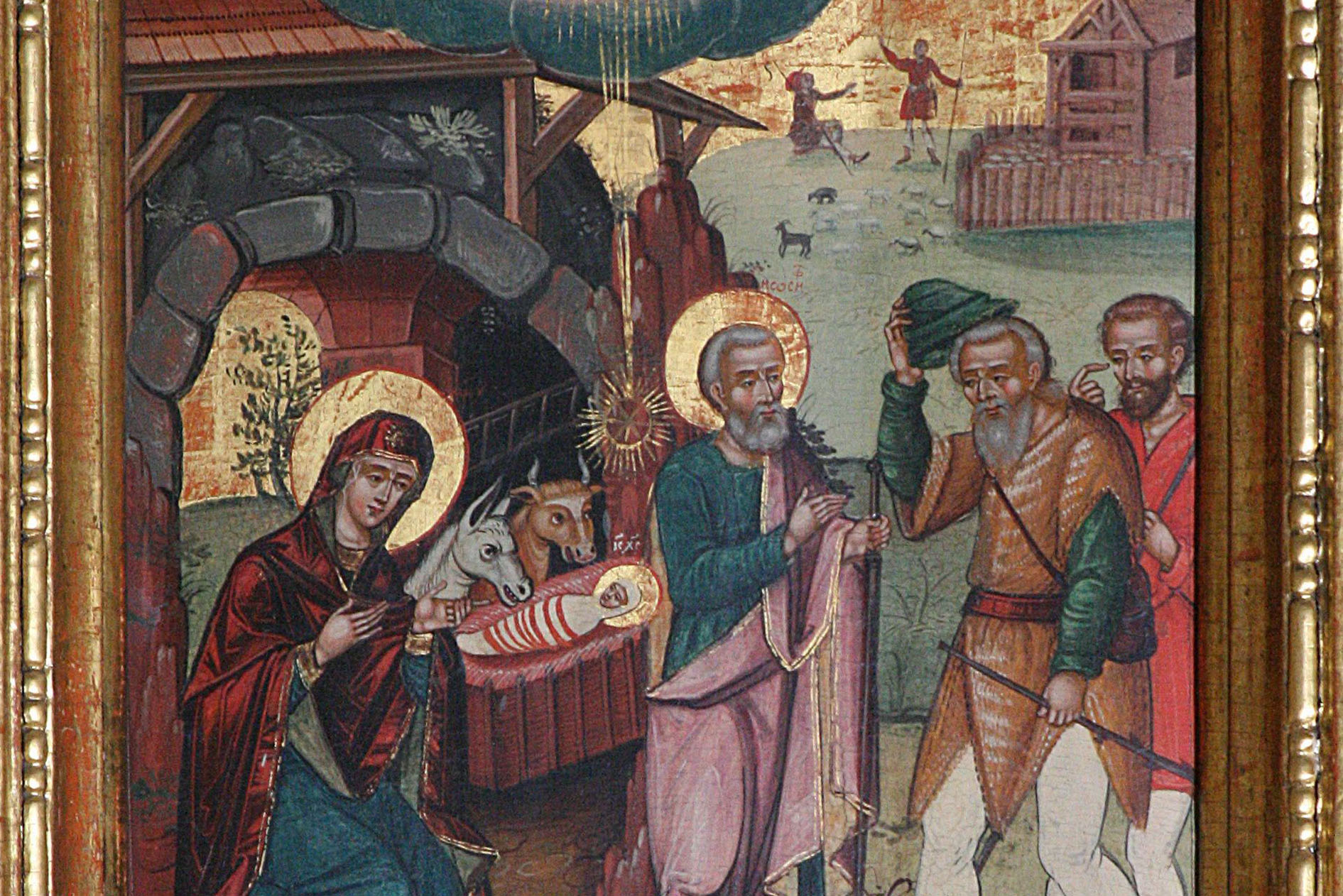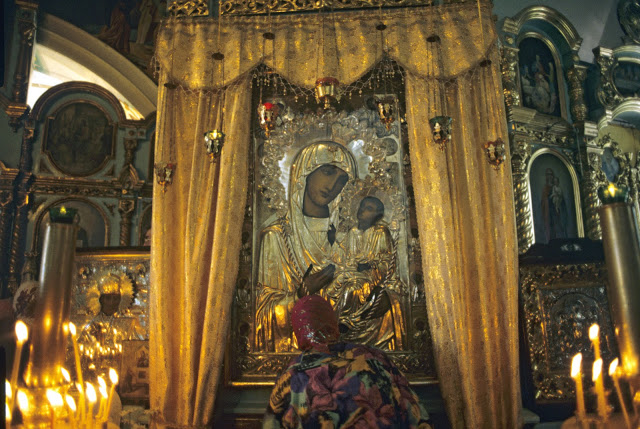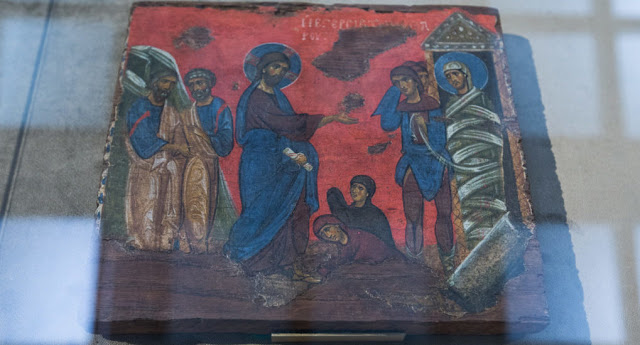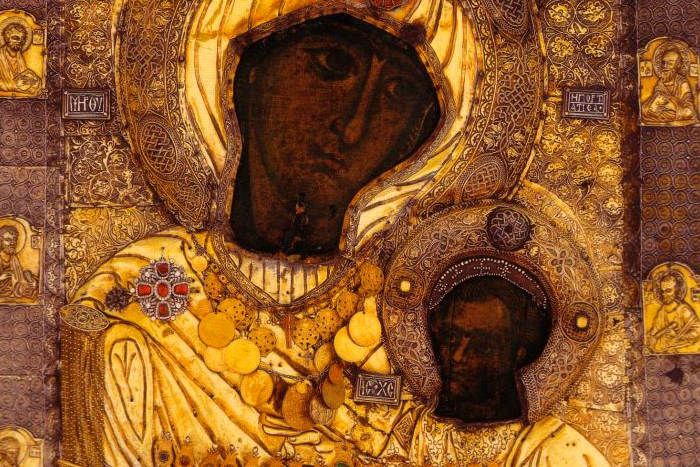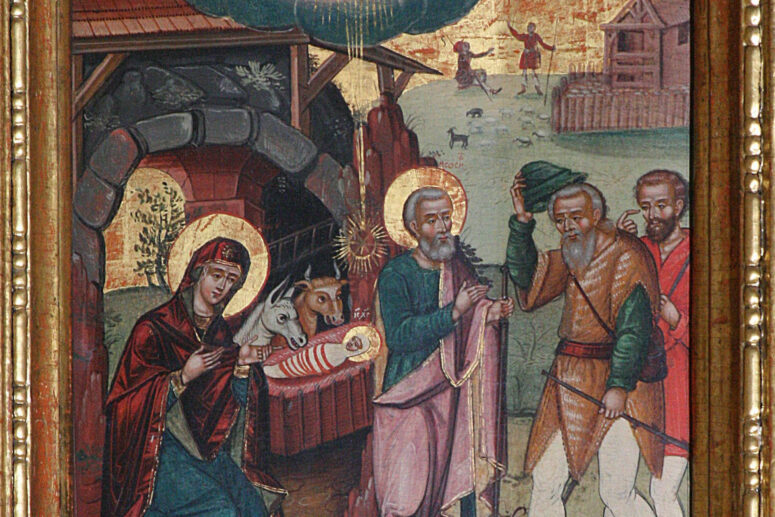
How did gold come to be used in church art? Why does it adorn the images of the saints? Is gold still important to iconography? Why do some icons have golden backgrounds, and is it true that more gold makes a better icon?
The icon “Theotokos of Vyshgorod” was brought to the Kievan Rus from Constantinople in 1130 and is an outstanding example of how its wonderful glow was preserved throughout the centuries through the expert use of gold. It was kept at the Convent of the Holy Theotokos in Vyshgorod, near Kiev, before it went to Vladimir. It is now widely known by its alternative name – the Holy Theotokos of Vladimir “Umileniye” (translates as compunction, tender feeling). Despite the age, it still keeps much of its original brilliance. The icon has a golden background. Golden threads outline the details of the Holy Child’s clothing, and golden stars and strokes adorn the Theotokos’ omophorion.

Some might identify the strips of the leaf gold and the thin golden lines as elements of the assist technique. This is a common misconception that occurs from time to time in scholarly writing. In truth, the assist technique is the use of a specific type of adhesive solution to which thin strips of leaf gold are affixed. The more accurate, if less pleasant-sounding name for the technique of gilding over paint is ‘iconopy’.
Golden mosaics
Iryna Yazykova explains: “… mosaics are our way to depict the Heavenly Jerusalem. In the book of revelations of John the Forerunner, it is a city built of precious stones, pure gold, and clear glass. Mosaic fits this description neatly.”
Experts attribute the dazzling effect of smalt mosaics to some of the following features. First, ground pieces of smalt have different sizes. Second, the fragments of smalt act like refracting lenses. Some of the pieces of the mosaic are oriented horizontally, and others at an angle. Natalya Sheredega explains: “Why are the pieces of smalt pressed into the substrate at different angles? This was supposed to create a light-filled space right in front of the depictions of the saints. In the church buildings, mosaics are most commonly found in the arches above the altar and on the columns adjacent to it. The curvilinear surfaces reflect the sunlight and fill the adjacent space with a golden glow.” The Virgin Orans of Kiev – also called the Unmoveable Wall – is stored in Kiev’s Saint Sophia Cathedral and represents an outstanding example of this technique. It depicts the Theotokos in the background of gold with her arms raised in prayer. Almost half of the mosaics of Saint Sophia’s cathedral are golden.
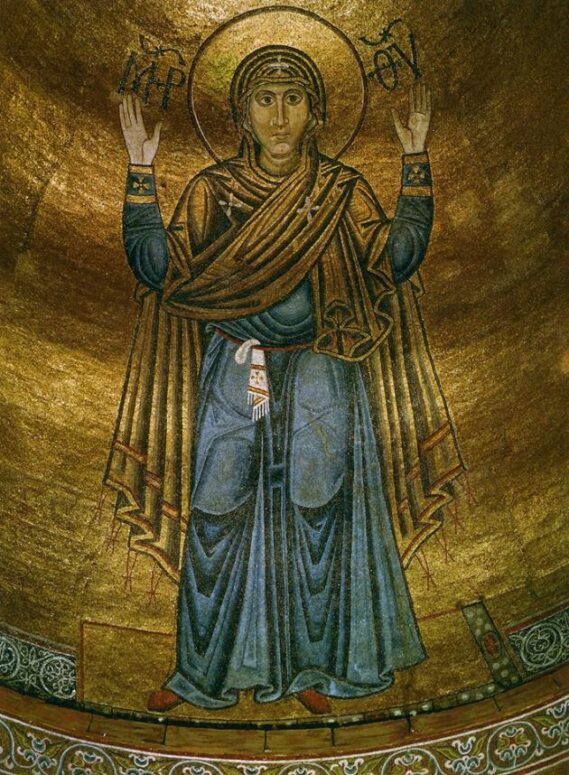
The mosaic depiction of Saint Demetrius of Thessaloniki in the background of gold remains an outstanding example of great mastery and skill. Fortunately, we can still observe this masterpiece of mosaic art recovered from Saint Michael’s Cathedral of the Golden-Roofed Monastery. This mosaic was salvaged, along with several others, just before the cathedral was demolished in 1935–1936.
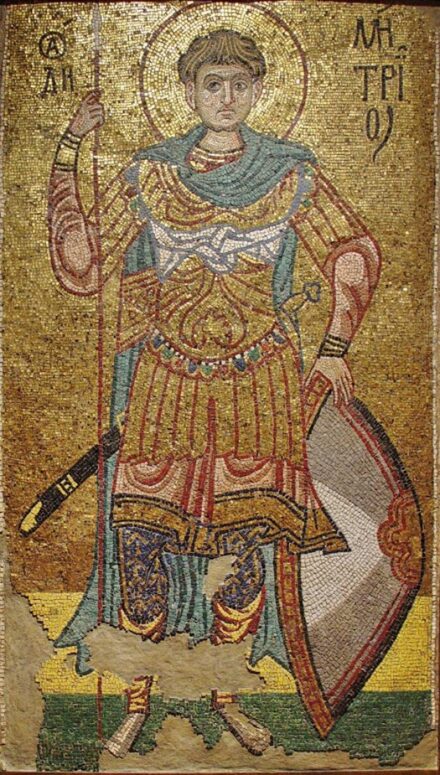
The use of gold in modern church art – causes of the decline
The use of gold became less common when Orthodox iconography began to drift towards realism. This change affected iconographers in many places, including Ukraine. Vladimir Ovsiychuk explains: “The poeticism of old gave way to realistic story-telling. Transition to a different set of colours was an expected development in light of the growing emphasis of science and art on the depiction of the natural world and man in it.”
The Icon of the Nativity of Christ from the iconostasis of the Church of Saint Paraskevi of Iconium in Lvov has the traditional golden background, and combines traditional gilding techniques with direct perspective depictions of surrounding landscapes and the use of shadow light modelling techniques in the depictions of the faces.
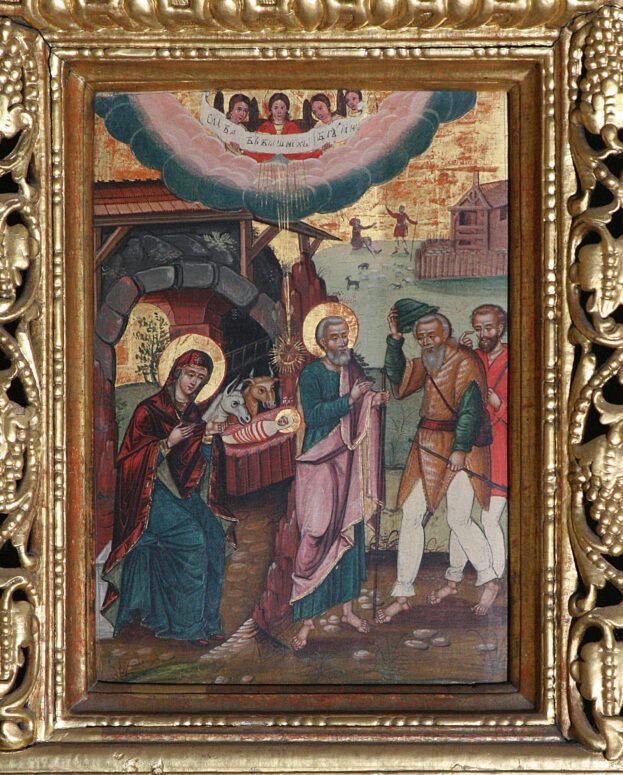
Ludmila Milyaeva remarks: “We might regret the loss by the Ukrainian icon of its past symbolic and dogmatic power and mysticism. Yet the people, their perceptions, sensations, and motivations have also changed remarkably in the course of history. No iconographer could stick to the medieval tradition in an era of the Internet.”
Overwhelmed by massive amounts of audiovisual information, can today’s people still understand the language and images of church art created in gold? This remains an open question. One thing is certain – gold is not going to disappear from church art. Its attractiveness and beauty, its embeddedness in the fabric of church art will continue to make it relevant for iconographers for many years to come; gold will continue to adorn the images of the saints in Orthodox icons for many generations ahead.
List of scholars and experts cited:
Prince Evgenii Nikolaevitch Troubetzkoy – Russian religious philosopher
Olga Popova – Doctor of Fine Arts, expert in Byzantine Art
Iryna Yazykova – art critic, candidate of Culture Studies
Victor Bychkov – Doctor of Sciences (Philosophy)
Natalya Sheredega – Head of the Department of Old Russian Art, State Tretyakov Gallery of Moscow
Vladimir Ovsiychuk – Doctor of Fine Arts
Ludmila Milyaeva – Doctor of Fine Arts, Professor, expert in Ukrainian iconography
Translated by The Catalogue of Good Deeds
Source: https://pravlife.org/ru/content/zoloto-na-ikone-za-chto-emu-hvala

